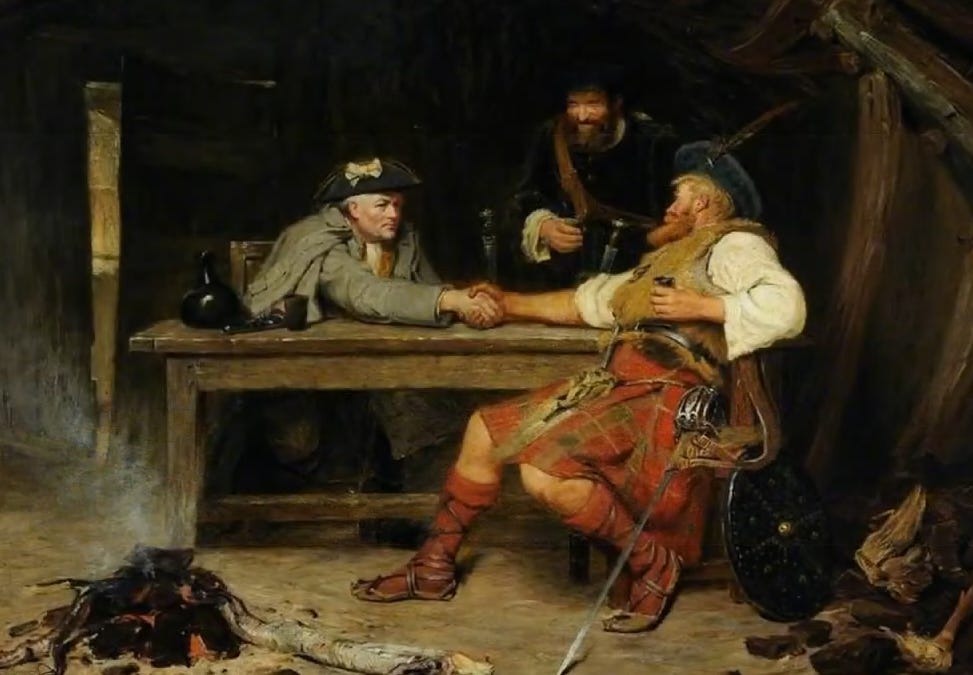The Case For Gaelic Revivalism
BY ARTAIR MUIR

"The strength of a nation is derived from the character, not from the wealth, nor from the multitude of its people."
- Adam Ferguson
As Ferguson wrote, character is the true strength of the nation; without it, people have no commonality, no shared roots, and no shared interests. While the character of Scotland has undergone numerous developments and been shaped to match various historical periods, its Gaelic roots have remained constant. It is an integral part of Scotland's character, shaped by Scotland's history and geography and moulded to fit into the mountains, the glens, the rivers, and our islands, where it survives today. The language has a rich lexicon that includes many words that have no equivalent in English. It has a long literary tradition, with poems, folktales, and songs passed from generation to generation unbroken until the modern era. This oral tradition, which is on the brink of extinction, represents not some bygone era but a living and breathing language. A living part of Scotland, the grammar of Scottish Gaelic is a reflection of the people who spoke it and continue to do so, and it is filled with complexity, one of the many reasons that makes the language so fascinating.
The character of Scottish Gaelic has played a crucial role in forming the Scottish character itself, and many things that people point to as Scottish cultural traditions are thanks to the Gaelic character: bagpipes, ceilidhs, tartan and tweed, Highland games, whisky, and from that element of our roots comes the enchanting spell of our glens, lochs, mountains, and heather fields. Many of these wonders were beautifully expressed in Gaelic and passed down to modern Scots. By promoting Gaelic, we can not only continue these traditions but also expand them and let them breathe fresh air. By protecting Gaelic, we're also protecting our sense of belonging, as Scots Gaelic is the anchor in a stormy sea trying to rip us from our ancestral past. Supporting the revival of Gaelic ensures that this beauty can be appreciated and experienced by future generations.
It would be unfair to speak about Gaelic and its current state without talking about what brought it here. The language faced significant persecution under government policies such as the Education Act 1872, which put an end to non-English-medium education, and children were physically abused for speaking it at school and faced further punishment for not revealing who else spoke it. Negative stereotypes were pushed across to simply abuse people for speaking Gaelic rather than English.
Many Gaelic families often had no legal protection on the land on which they lived, being thrown off for no reason and having nothing to support themselves. It was only in 1886, with the Crofters Holdings Act, that Gaelic families finally had some form of legal protection, thanks in large part to a great man named John Murdoch and many other land reform campaigners. Gaelic didn't fall down the stairs; it got kicked down. What happened to Gaelic could be described as a form of Scottish cultural revolution. Even today, many people regard Gaelic as a negative thing; they are typically the same individuals who want to adhere to an extreme kind of Britishness, despite the fact that many of them struggle to describe what a uniform British identity is outside of the national identities that comprise the British Isles.
In conclusion, Scottish Gaelic is a unique and beautiful language. It is an essential part of Scottish cultural heritage. Its rich and complex literary traditions allow us to know ourselves as Scots, and to lose it is to lose the heart of Scotland and our sense of belonging, which would be nothing short of a national tragedy.
Slàinte Mhath
Copyright © 2023 TheSchizophrenicObserver - All Rights Reserved.